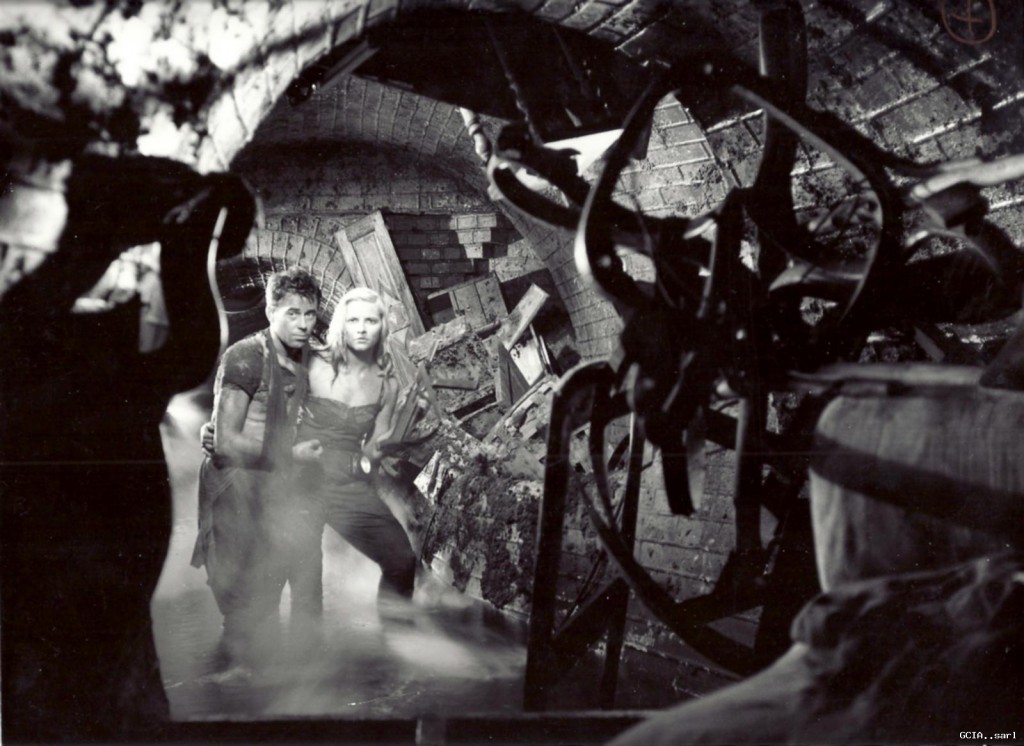Mixed Modalities: Eiko at Anthology Film Archives
March 21, 2016
by Leeroy Kun Young Kang
It seems fitting that I watched these films before witnessing Eiko perform. There is a feeling, part curious, part mischievous, about peeking at someone’s bookshelf when you go to their house for the first time. The Maya Deren Theater has always been my favorite theater at Anthology Film Archives, because of its intimacy, like a home. While I sat there waiting for the programs to begin, I wondered what could be gleaned about the interiority of Eiko’s performance-based practice through the films that she loves and also creates.
“How do directors take their audience somewhere else?” This question of elsewhere, which Eiko posed at the first screening I attended, stuck me as a central inquiry into what she strives to achieve in her performance work—a transference to other times and places. As we move through time and space, how do we translate one form, practice, or media to another? How can these mixed modalities of senses and haptic exchanges through dance and film ignite further cross/interdisciplinary creation and thought? How do we then mediate these translations through writing?
PROGRAM 2: BODIES IN WATER, February 24, 2016
WALLOW (Eiko & Koma, 1984, 19 min, video)
Eiko is face down on the shore. Waves lapping her feet. She slowly rolls over, arching her back. The tide comes in. She is now closer, waves crashing over her entire body. Koma joins her; locking into an embrace, they move together. They are both wearing black against the neutral palette of the sand. Writhing, their bodies towards the ocean, they sit up and collapse repeatedly. She impales him repeatedly. Through an aerial shot we see the figures separated, crawling towards the ocean. We are met with black in the end. This is their first attempt to create dance for film. She swears that she will never do it again.
KANAL (Andrzej Wajda, 1956, 95 min, 35mm, b&w)
We immediately know this is a war film. Building ruins and explosions are the backdrops to the opening credits. I immediately take note of the marks of decayed emulsion on the film. The year depicted is 1944 and the Warsaw Uprising is nearing its end. A small remaining group of Polish resistance fighters make a final effort to escape the Nazi onslaught through the sewer system. It’s not even mid-way through the film, and I start to feel sick. I am suddenly finding myself in my body, made warm and queasy by the harrowing journey and unspeakable despairs of war. The durational trudge underground creates a visceral claustrophobia. Light is scarce and only seldom does the camera give us relief by showing us a view above ground. I oscillate between my unknowingness of this past and the recognition of the present moment within these images. I ruminate on how this film could generate beauty and how it will later go on to influence the creation of Canal—Eiko and Koma’s meditation on the potential and dangers of water.
PROGRAM 3: BODIES ON AN ISLAND, March 2, 2016
HUSK (Eiko & Koma, 1987, 9 min, 16mm)
An unnamed body in an unnamed place. Eiko is in fetal position on the ground, covered in leaves. A slight breeze moves over her body and her gown made of leaves. An eerie high frequency pitch is audible throughout. This time Koma is behind the camera. They call this a “videodance.”
NAKED ISLAND (Kaneto Shindo, 1960, 96 min, 35mm, b&w)
Hearing the title, I immediately think of a soft body. We are told that there is no dialogue, which means that we will have to try harder. A natural and distinct rhythm emerges. The film focuses on the mother/wife as she drives the narrative through quiet gestures, movements, and expressions. The two young boys play freely and joyfully together on the island. The husband is deeply reserved and quietly violent. It is clear that they live in isolation. Movement through and with water is present throughout—rowing the boat into the mainland to collect water, carrying water on shoulders to sustain the agriculture, water flowing from a mother’s eyes. The rhythm is only briefly disrupted in moments of violence and death. All of our ears perk up when Eiko shares that this is the most important film to her. After watching it, I feel like I understand why. Like all the other films, it is filled with the nakedness of humanity, survival, loss, and the relentless (and at times violent) pursuit of hope.
